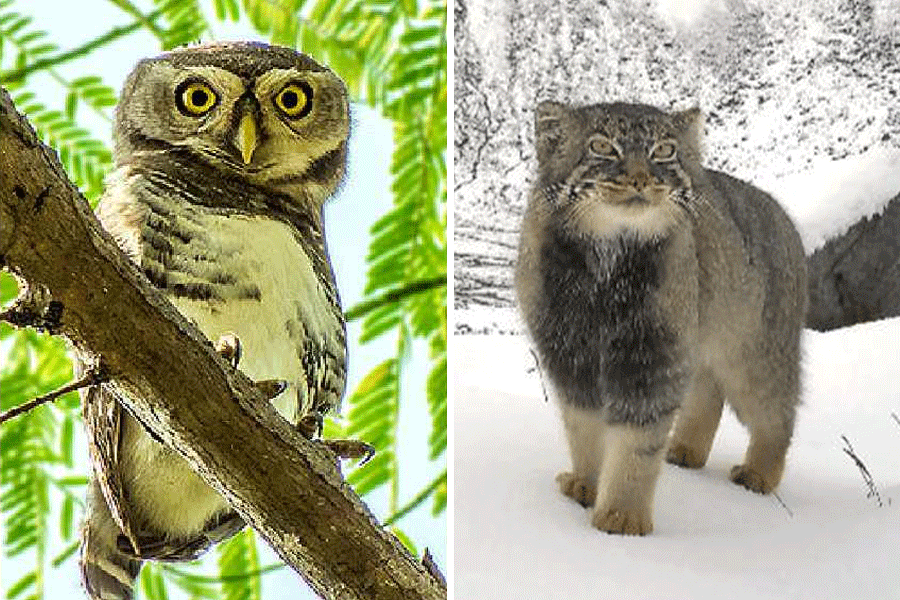
New Delhi, Dec. 15: Every rainy season for four years, Sreejani Sen Mazumdar trudged across Calcutta's Salt Lake suburb three evenings a week, notebook in hand, looking for stray dogs making advances to each other or mating.
The research scholar from the Indian Institute of Science Education and Research, Calcutta, was trying to determine whether rain can influence the mating behaviour of dogs, as anecdotal accounts suggest it does.
Her study, which documented over 3,700 such canine acts, has now corroborated the puzzling observation that stray dogs in tropical countries like to mate during the rainy season. Puzzling because, by evolutionary logic, stray dogs are not expected to be seasonal breeders.
Their proclivity for monsoon mating is therefore, scientists at the IISER say, a possible instance of the chemistry of love trumping evolutionary biology.
Studies by Mazumdar and her supervisor, Anindita Bhadra, indicate that the higher the rainfall, the greater the chance, usually, of successful mating among stray dogs.
Their study, conducted in Salt Lake and other Bengal towns, corroborates an idea proposed four decades ago by Alan Beck, a senior animal-behaviour scientist at Purdue University in the US, and by a Bengal schoolteacher who's been tracking dogs over the past decade.
Scientists have known for decades that many mammals, particularly those living in harsh environmental conditions, are seasonal breeders: they mate so as to have their young in periods of abundance. It is beneficial to lactating female mammals to match their period of lactation with times of plentiful food.
A series of independent studies since the 1950s has shown that elephants, gazelles, rhesus macaques and wolves are among mammals that display such seasonal breeding.
However, scientists have also observed that domestic animals and zoo animals become round-the-year breeders, because they don't need to worry about finding food.
Scientists don't expect stray dogs to be seasonal breeders as they primarily rely on offerings by people and food waste, available through the year. But since 2003, Sunil Kumar Pal, a schoolteacher in Burdwan, has documented that mating by dogs in Bengal coincides with the rainy season.
Mazumdar spent over 900 hours tracking 67 stray dogs over four years in Salt Lake. She also picked 40 other locations across the state covering Calcutta, Kalyani, Kanchrapara, Barrackpore and Barasat for a yearlong dog census, sampling an average of 15 dogs at each site.
Both sets of observations show that the frequency of mating behaviour was highest usually during the periods of heavy rainfall.
Their four-year analysis documented 2,703 acts of mating-related behaviour on days that had the highest rainfall, 778 acts during days of moderate rainfall, and 252 during days of low rainfall. Their findings were published last week in the journal, PLOS One.
The scientists' suggested explanation is that the increased humidity and reduced temperature associated with rainy days helps dogs perceive sex pheromones from potential mating partners with far greater sensitivity than on dry days.
"Dogs' fantastic sense of smell means that their noses are bombarded by all available odours in the air - the pheromone signals have to compete with other signals," Bhadra, a scientist and biology teacher at IISER who led the study, told The Telegraph.
But heavy showers are likely to wash away "olfactory noise" while the increased humidity and low temperature could make the pheromone signals more noticeable around individual dogs.
This may explain why mating-related behaviour is not observed on days of extremely heavy rainfall when the rain is likely to wash away even the pheromone signals.
A senior animal behaviour scientist at the University of Mysore, who was not associated with the Bengal study, said its primary contribution lay in establishing with strong data the association between the rainy season and dog mating behaviour.
"But mating even among dogs is a complex behaviour, not determined exclusively by pheromones, and the explanation of the rain washing away olfactory noise for the moment is pure speculation," Mewa Singh, professor of animal behaviour and socio-biology, said.











